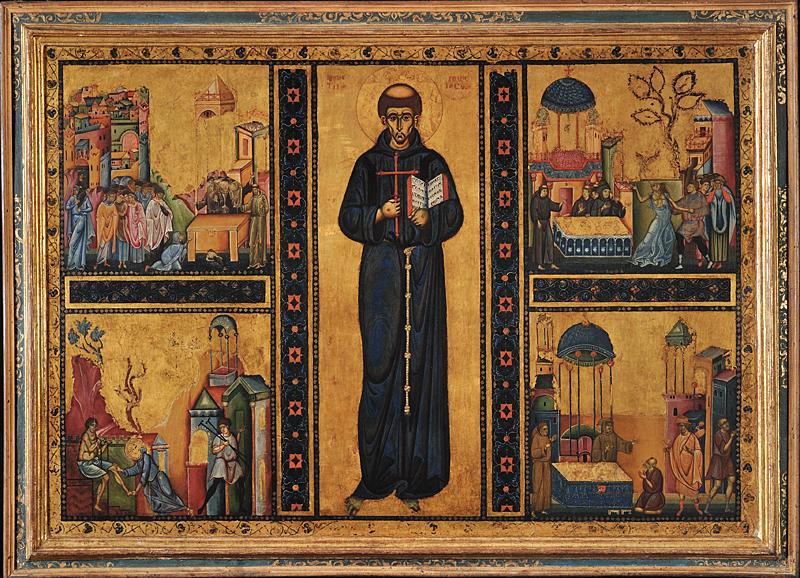Around 1635, Spanish artist Francisco de Zurbarán painted “Saint Francis in Meditation,” a striking life-size portrait of Francis kneeling in prayer and gazing up to God in adoration.
Zurbarán made Francis’s faith palpable by painting Francis the man, without the fanfare of his miracles. Francis wears the habit worn by the friars of the Capuchin order of Franciscans. His habit is well worn, and patched up. He’s tied three knots in his belt to represent poverty, chastity, and obedience. (Two knots are seen in the painting.) He holds a skull, symbolizing the impermanence of life and Christ’s crucifixion (a motif that El Greco first introduced to Spanish paintings of St. Francis).






